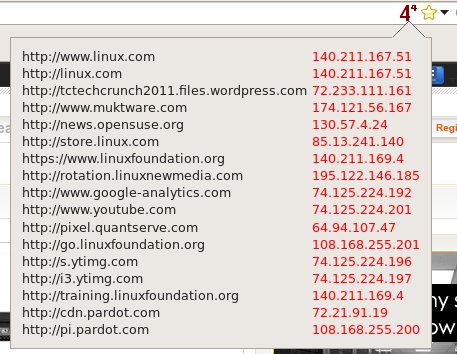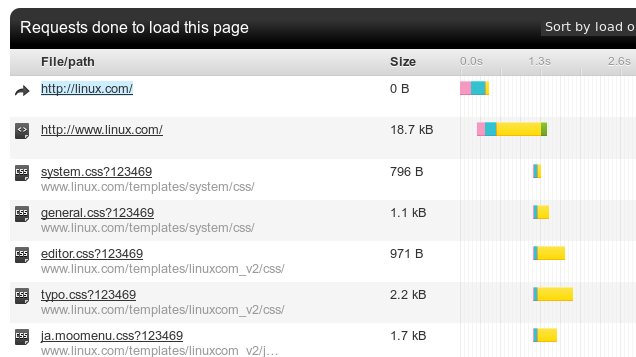Migrating a Website
When you’re moving a Web site, how do you know if your name server changes are working? What’s My DNS? shows what a random assortment of nameservers all over the world are reporting for whatever hostname you’re querying. By default it queries A records, and you can select any DNS record you want. This is a great site for tracking the propagation of any DNS changes you have made.
 When you’ve moved a site to a new server with a different address, how do you know which site you’re seeing in your Web browser: the new one or the old one? Webmasters have all kinds of tricks for this, like making a small change on the front page of the new site, or fiddling with
When you’ve moved a site to a new server with a different address, how do you know which site you’re seeing in your Web browser: the new one or the old one? Webmasters have all kinds of tricks for this, like making a small change on the front page of the new site, or fiddling with /etc/hosts. I like using /etc/hosts to get the most accurate preview of a new site before pushing it live. Suppose your old server address is 1.2.3.4, and the new server address is 1.2.3.5. To see the new site before publishing the new DNS, make an entry like this in /etc/hosts:
1.2.3.5 newsite.hostname
Don’t forget to remove it when you’re done testing.
After publishing your new DNS, you can see right in your Firefox Web browser which server you’re looking at, the new or old one, with the IPvFox add-on. This sits in the URL bar, so all you have to do is click it to see where your pages are being served from. Figure 1 shows the plethora of servers that feed the ravenous Linux.com.
IPvFox is also a great tool for improving webpage performance by showing you exactly where all page elements are coming from, and for tracking down un-encrypted, third-party content on your HTTPS pages. Chromium users can use IPvfoo, which is the inspiration for IPvFox.
Checking Nameserver Configuration
Nameserver configuration is hard to get right, especially for BIND admins. Somehow BIND became the standard, and the most widely-used nameserver even though it is the most complex DNS server to configure. So a third-party configuration checker can be a real life-saver. My favorite is Dnssy.com. Its DNS Test Report does a comprehensive check of your hostname configuration, and creates a detailed report. Webdnstools.com is another good site for testing nameservers, and it has a lot of good articles that teach all those gnarly name server concepts like glue records, spoofing, cache poisoning, and so on.
Is My Site Down For Everyone, or Just Me?
Downforeveryoneorjustme.com answers that most common of questions. In the olden days we could run a few quick pings from our PCs and from remote websites, but a lot of admins in these modern times mistakenly believe that blocking pings improves their security, so ping isn’t reliable as an indicator of an up host anymore.
Monitive.com checks your site from multiple locations around the world. It’s a good way to find out if a site is being blocked in your country, or if there is an Internet outage somewheres. Speaking of Internet outages, Internet Traffic Report tracks network health all over the world, and Internet Pulse tracks Internet health in the US.
 Performance Testing
Performance Testing
Content management systems like Drupal, WordPress, Joomla, and Plone power most modern websites, and each one comes with its own set of baggage and performance killers. Themes are notorious system hogs, so wise admins test themes before rolling them out on production systems. Pingdom.com has a nice batch of free and paid testing tools. The full-page test measures the load time of every element on a webpage, and displays the results in a good colored graph that shows where the bottlenecks are, like DNS lookups, SSL handshakes and waiting for the server. Figure 2 shows a snippet for Linux.com.
Don’t overlook the tabs at the top of the graph. It also rates individual performance metrics on the Performance Grade tab, and supplies a detailed Page Analysis. The History tab compares with previous runs.
Accessibility
The Juicy Studio Accessibility Toolbar is a super nice Firefox addon for testing the accessibility of your site for people with vision impairments, and compatibility with assistive devices like screen readers.
SSL Tester
Qualys SSL Labs has a lot of excellent information on securing Web sessions with SSL. As with so many things, SSL is hard to get right and easy to muck up while having a false sense of security. Web browsers are getting a lot pickier, and issue scary warnings to site visitors if your site is not set up to their satisfaction. I don’t know if people pay much attention to these since we’re used to ignoring scary warnings, but still it’s important to get it right.
It also has a site tester, so you can test your own site and get a detailed report on strengths and weaknesses.





